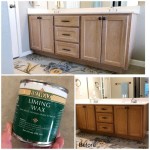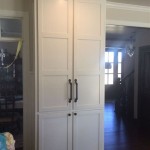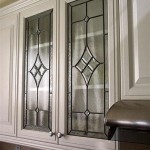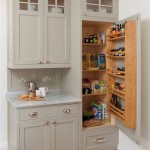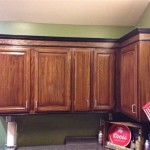How to Install a Medicine Cabinet in Bathroom Walls
A medicine cabinet is a practical and stylish addition to any bathroom, offering a dedicated space to store toiletries, medications, and other essentials. Installing a medicine cabinet requires careful planning and execution to ensure it is securely mounted and aesthetically pleasing. This guide will walk you through the steps of installing a medicine cabinet in bathroom walls, covering essential considerations, materials, and safety precautions.
1. Choosing the Right Medicine Cabinet
Selecting the perfect medicine cabinet involves considering various factors:
-
Size:
Measure the available space and choose a cabinet that fits comfortably without being too bulky. -
Style:
Choose a style that complements your bathroom's design, whether it's modern, traditional, or contemporary. -
Features:
Consider features like mirrored doors, adjustable shelves, built-in lighting, or a combination of these. -
Material:
Options include metal, glass, wood, or a combination of these. Metal cabinets are often durable, while glass cabinets can enhance the bathroom's aesthetic appeal. -
Installation Type:
Medicine cabinets can be surface-mounted or recessed. Recessed cabinets offer a sleek, integrated look, while surface-mounted cabinets provide easier access.
2. Planning the Installation
Before beginning the installation, carefully plan the location and ensure that the wall is suitable for mounting.
-
Location:
Choose a location that provides convenient access and avoids obstructing any fixtures or pipes. Consider the height and placement to ensure comfortable use. -
Wall Type:
Determine the type of wall material. Drywall requires specific mounting techniques, while solid walls offer easier installation. -
Plumbing and Electrical:
Mark the location of any plumbing or electrical lines to avoid damaging them during installation. -
Studs:
Locate the studs in the wall using a stud finder. Anchoring the medicine cabinet to studs ensures maximum stability.
3. Tools and Materials
To install a medicine cabinet successfully, gather the following tools and materials:
-
Measuring Tape:
For accurate measurements and spacing. -
Level:
To ensure the cabinet is installed straight and even. -
Pencil:
To mark the installation points. -
Drill:
To create pilot holes and secure the cabinet. -
Screwdriver:
To tighten screws and assemble the cabinet. -
Stud Finder:
To locate wall studs. -
Anchors:
For mounting in drywall or other non-stud locations. -
Screws:
Choose screws appropriate for the wall material and cabinet. -
Caulk:
To seal any gaps between the cabinet and the wall. -
Safety Glasses:
To protect your eyes from debris. -
Gloves:
To protect your hands.
4. Installation Process
Once you have gathered all the necessary tools and materials, follow these steps to install your medicine cabinet:
-
Mark the Installation Points:
Use a level to mark the desired location of the medicine cabinet on the wall. Ensure the cabinet is centered and level. -
Create Pilot Holes (If Required):
If drilling into drywall, create pilot holes using a drill bit slightly smaller than the diameter of the cabinet's screws. This helps prevent the drywall from cracking. -
Secure the Cabinet:
Use screws or anchors to secure the cabinet to the wall, following the manufacturer's instructions. Tighten the screws firmly to ensure stability. -
Install the Interior Components:
If the cabinet features shelves or other internal components, install them according to the manufacturer's instructions. -
Caulk and Clean:
Apply caulk around the edges of the cabinet to seal any gaps and prevent moisture from entering. Wipe away any excess caulk. -
Test and Enjoy:
Thoroughly test the cabinet's functionality and enjoy your new storage solution.
5. Safety Precautions
Installing a medicine cabinet involves working with power tools and potentially hazardous materials. Prioritize safety by following these precautions:
-
Wear Safety Glasses:
Protect your eyes from debris and flying objects. -
Use Gloves:
Protect your hands from sharp edges and potential injuries. -
Turn Off Electrical Power:
If working near electrical outlets or wiring, disconnect the power to the circuit to avoid electrocution. -
Avoid Working Alone:
If possible, have someone assist you with the installation for added safety and support. -
Inspect the Cabinet:
Before installing, inspect the cabinet for any defects or damage. If you identify any issues, contact the manufacturer or retailer. -
Follow Manufacturer's Instructions:
Always refer to the manufacturer's instructions for specific installation details and safety recommendations.

How To Install A Medicine Cabinet The Home Depot

How To Install A Medicine Cabinet The Home Depot

How To Install A Medicine Cabinet The Home Depot

How To Install A Medicine Cabinet The Home Depot
How To Install A Surface Mount Medicine Cabinet Signature Hardware

How To Install A Medicine Cabinet Everything You Need Know Getprohome

How To Install A Medicine Cabinet Inset Or Surface Mount Bob Vila

How To Install A Medicine Cabinet The Home Depot

How To Install A Recessed Medicine Cabinet

How To Hang A Cabinet Do It Yourself Install
Related Posts

